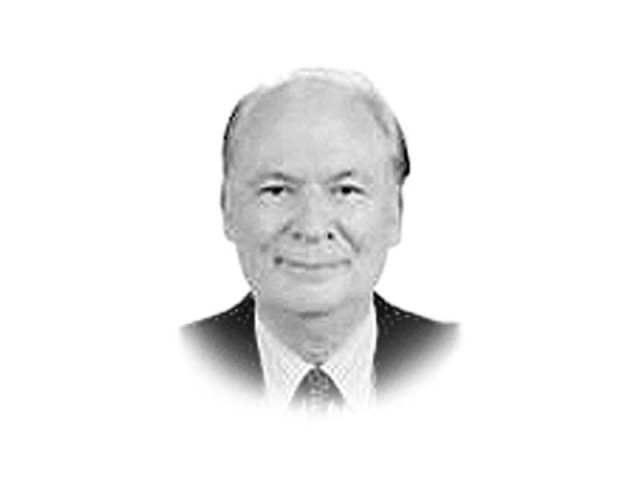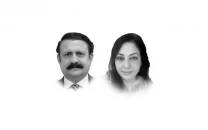Losing count of the many Muslim Leagues
The dollar has crossed Rs105 and is likely to touch Rs130 by 2020. When that happens, will any of the Leagues survive?

anwer.mooraj@tribune.com.pk

The first significant event in the Muslim League saga took place during the reign of General Mohammed Ayub Khan. Once the dictator decided he wanted to start wearing suits, the Pakistan Muslim League was split in two. A Convention Muslim League was formed in support of the military regime and consisted of a bunch of right wing reactionaries. Naturally, a Council Muslim League had to pop up in opposition as a sort of antithesis. It consisted of a clutch of five heavyweights who were also right wing reactionaries. But it was all very civilised and friendly. The country was still secular. Aid started to pour in. Twenty-two families started an industrial revolution. Pakistan was ahead of South Korea in GDP. A dollar cost Rs4 and a pound six. But after 11 years, Ayub had to call it a day.
The second significant event was the creation of the New Muslim League during the reign of General Ziaul Haq, Pakistan’s most retrogressive and intolerant dictator. Paradoxically, Pakistan’s highest industrial growth rate took place under Zia. The dictator appointed Mohammed Khan Junejo as prime minister who turned out to be the best prime minister this country had ever seen. But Junejo shot himself in the foot when he publicly announced that he wanted an inquiry conducted into the Ojhri Camp disaster. Zia’s Afghanistan adventure, with the connivance of the CIA, laid the foundation stone for the rise of obdurate militancy which no successor has been able to tackle successfully. On Junejo’s dismissal, Prime Minister Nawaz Sharif’s star was in the ascendancy.
The third significant event was the rise to prominence of General Parvez Musharraf and the Pakistan Muslim League (Q), of the Chaudhry Brothers. The Q, of course, stands for Quaid-e-Azam, though any connection with the founder is pure fiction. For the first two years, Musharraf did remarkably well. A dollar in his time cost Rs60. But then he also got the urge to wear suits and rule as a civilian dictator, and in the process made two cardinal mistakes: taking on the chief justice on the insistence of the prime minister and introducing the NRO on the instigation of the Americans. It was a heady cocktail which brought about his ignoble exit and ushered in an era where both the PPP and the Muslim League (N) have had cracks at the national cherry. The dollar has crossed Rs105 and is likely to touch Rs130 by 2020. When that happens, will any of the Leagues survive?
Published in The Express Tribune, September 6th, 2015.
Like Opinion & Editorial on Facebook, follow @ETOpEd on Twitter to receive all updates on all our daily pieces.
















COMMENTS
Comments are moderated and generally will be posted if they are on-topic and not abusive.
For more information, please see our Comments FAQ